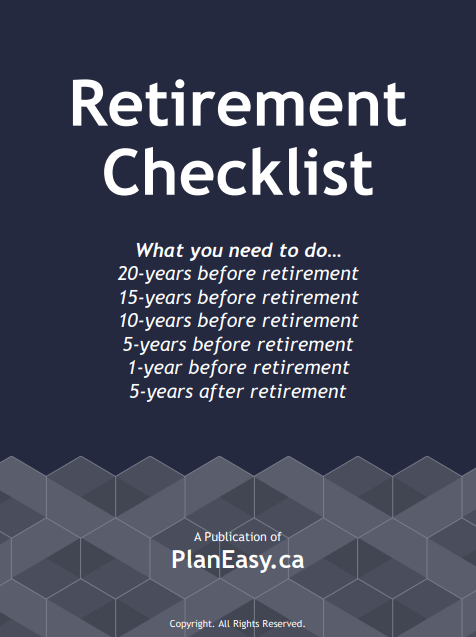Retirement Rules Of Thumb: Ranked From 1 To 5
Rules of thumb can be great tools when quickly evaluating financial goals and objectives. But not all rules of thumb are good, especially when it comes to retirement.
Some retirement rules of thumb are excellent, while others are misleading. Rules of thumb are great when creating rough financial goals, but they can be too general, and in the worst-case scenario they can be misleading and out of date.
In this blog post we’re going to review three retirement rules of thumb and we’re going to give them a “thumb” rating from 1 to 5. One being complete garbage, never use. And five being just amazing, you can plan your life by this rule.
Income Replacement Ratio: 70% Of Pre-Retirement Income (2 out of 5 “Thumbs”)
The “income replacement ratio” is a common retirement rule of thumb that suggests you need 70% of your pre-retirement income in retirement.
This rule of thumb is very subjective, and your actual income replacement ratio can vary greatly, from below 50% to above 90% depending on the circumstances.
For example, imagine you’re approaching retirement, you don’t have a pension and save 20%+ of your income for retirement, you still have a few years left on your mortgage payments, and your children are just entering post-secondary or starting full-time careers. In this situation a large percentage of income is being used to support cash flow for savings, mortgage payments, and child expenses, but these will disappear in just a few years. In this case the 70% rule of thumb could be much too high, and the actual income replacement ratio could be as low as 50%.
Imagine using the 70% rule of thumb and over saving for 20-30 years? Sure, you would be quite wealthy, but imagine all the missed vacations, restaurants etc.
As another example however, if you’re a renter and have a defined benefit pension, then it could be that you’re only saving a small percentage of your income for retirement, maybe 5% into a TFSA. Because those rental expenses will continue into retirement, it could be that the 70% rule of thumb is much too low, and the actual income replacement ratio could be as high as 90%.
Imagine using the 70% rule and not having enough in retirement? You need 90% of your pre-retirement income but only have 70%. That’s a big lifestyle change right at the beginning of retirement.
The income replacement ratio gets used a lot for basic retirement planning but it’s not a great rule of thumb and can vary greatly from one person to the next.
Asset Allocation: 120 – Age In Equities (1 out of 5 “Thumbs”)
A common asset allocation rule of thumb suggests that the percentage of your portfolio that should be allocated to equities should be equal to 120 minus your age (or even worse, 100 minus your age).
So, for example, if you’re 65 years old then only 55% of your portfolio would be in equities.
This rule of thumb is terrible for a couple reasons. The first is that it does not take into consideration personal risk tolerance. The second is that it means having a very heavy allocation to fixed income as you get older.
This rule may have made more sense in the past when fixed-income returns were higher, and longevity was shorter. In the past if longevity was mid-70’s and retirement was mid-60’s then that money only needed to last 10-20 years.
But with longevity increasing and fixed-income returns decreasing it’s important to have a portfolio that will last 30+ years. Starting retirement with too much in cash/fixed-income may decrease investment risk but it increases inflation rate risk and longevity risk. As a general rule, this asset allocation rule is very misleading.
Blog post continues below...
Advice-Only Retirement Planning
Are you on the right track for retirement? Do you have a detailed decumulation plan in place? Do you know where you will draw from in retirement? Use the Adviice platform to generate your own AI driven retirement decumulation plan. Plan your final years of accumulation and decumulation. Reduce tax liability. Estimate "safe" vs "max" retirement spending. Calculate CPP, OAS, GIS, CCB etc. And much more!
Start your retirement plan for just $9 for 30-days!
You deserve financial peace of mind as you enter retirement. Start planning now!

4% Rule (4 out of 5 “Thumbs”)
The 4% rule suggests that you can withdraw 4% of your initial retirement portfolio, adjusted for inflation each year, and have a reasonable chance of not running out of money over 30-years.
As far as retirement rules of thumb, this one is not bad. It has its cons of course, but it’s backed up by quite a bit of academic research (unlike the other rules of thumb above), which is a big positive.
The downside of the 4% rule is that it’s very simple and often people don’t realize that there are a few important caveats.
One is that investment fees will reduce the 4% safe withdrawal rate. A 0.25% annual investment fee will reduce 4% to 3.75%, a 1% annual investment fee will reduce 4% to 3% etc. etc.
A second is that the original 4% rule was built using US investment returns and when using global returns, the results are different. So, it’s important to remember that when investing in a globally diversified portfolio the 4% rule may not apply.
A third is that it only looks at a 30-year retirement period, so those planning to retire at age 55 or earlier have additional risk due to the chance of having a retirement period that is 30-40 years or longer.
Retirement Rules of Thumb
Rules of thumb are great when sanity checking your retirement plan, but should you use a rule of thumb for the basis of your entire retirement plan? Perhaps not.
They can be great when creating a rough framework for retirement. They can quickly help validate if a retirement idea/scenario will have potential.
We often use rules of thumb to quickly sanity check strategies, scenarios, projections etc. It can be helpful when evaluating a retirement plan but they shouldn’t replace a detailed accumulation and decumulation plan.
Are there any additional retirement rules of thumb that you’re using to build/check your retirement plan?
Join over 250,000 people reading PlanEasy.ca each year. New blog posts weekly!
Tax planning, benefit optimization, budgeting, family planning, retirement planning and more...
Join over 250,000 people reading PlanEasy.ca each year. New blog posts weekly!
Tax planning, benefit optimization, budgeting, family planning, retirement planning and more...







0 Comments